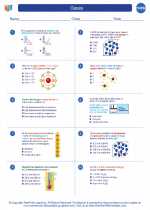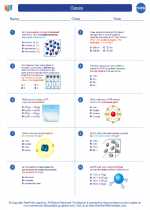Structure of ATP
The structure of ATP consists of an adenosine molecule (adenine + ribose) bound to three phosphate groups. The phosphate groups are labeled alpha (α), beta (β), and gamma (γ) from closest to furthest from the ribose. The bonds between the phosphate groups are high-energy bonds, and the release of the terminal phosphate group releases a significant amount of energy.
Function of ATP
ATP is the primary energy carrier in cells. It stores and releases energy for many cellular processes, including biosynthetic reactions, movement, and active transport. When ATP is hydrolyzed (broken down by the addition of water), it releases energy that can be used by the cell to drive endergonic (energy-requiring) reactions. This process produces adenosine diphosphate (ADP) and inorganic phosphate (Pi).
ATP Synthesis and Hydrolysis
ATP is synthesized in the cell through processes such as cellular respiration and photosynthesis. During cellular respiration, ATP is produced in the mitochondria through the processes of glycolysis, the citric acid cycle, and oxidative phosphorylation. In photosynthesis, ATP is synthesized in the chloroplasts during the light-dependent reactions.
ATP hydrolysis occurs when ATP is broken down to release energy. This process involves the cleavage of the terminal phosphate group through the addition of water, resulting in the formation of ADP and Pi. The energy released during this process is used to drive cellular work.
Role of ATP in Cellular Processes
ATP is involved in a wide range of cellular processes, including:
- Active transport: ATP provides the energy needed to transport molecules across cell membranes against their concentration gradients.
- Muscle contraction: ATP powers the movement of muscles by providing the energy needed for muscle fibers to contract.
- Biosynthesis: ATP is used to drive the biosynthesis of macromolecules such as proteins, lipids, and nucleic acids.
- Nerve impulse transmission: ATP is involved in the transmission of nerve impulses by enabling the active transport of ions across neuronal membranes.
Study Guide for ATP
When studying ATP, it is important to focus on its structure, function, synthesis, and role in cellular processes. Here are some key points to include in your study guide:
- Describe the structure of ATP, including the components of adenosine and the arrangement of phosphate groups.
- Explain the function of ATP as the primary energy carrier in cells and its role in powering cellular processes.
- Discuss the processes involved in ATP synthesis, such as cellular respiration and photosynthesis, and how energy is stored in ATP molecules.
- Explore the concept of ATP hydrolysis and how the release of energy drives cellular work.
- Examine specific cellular processes that rely on ATP, such as active transport, muscle contraction, biosynthesis, and nerve impulse transmission.
Understanding ATP is essential for comprehending the fundamental processes of energy transfer and utilization in living organisms. By grasping its structure, function, and significance in cellular activities, you can gain a deeper insight into the bioenergetics of living systems.
.


